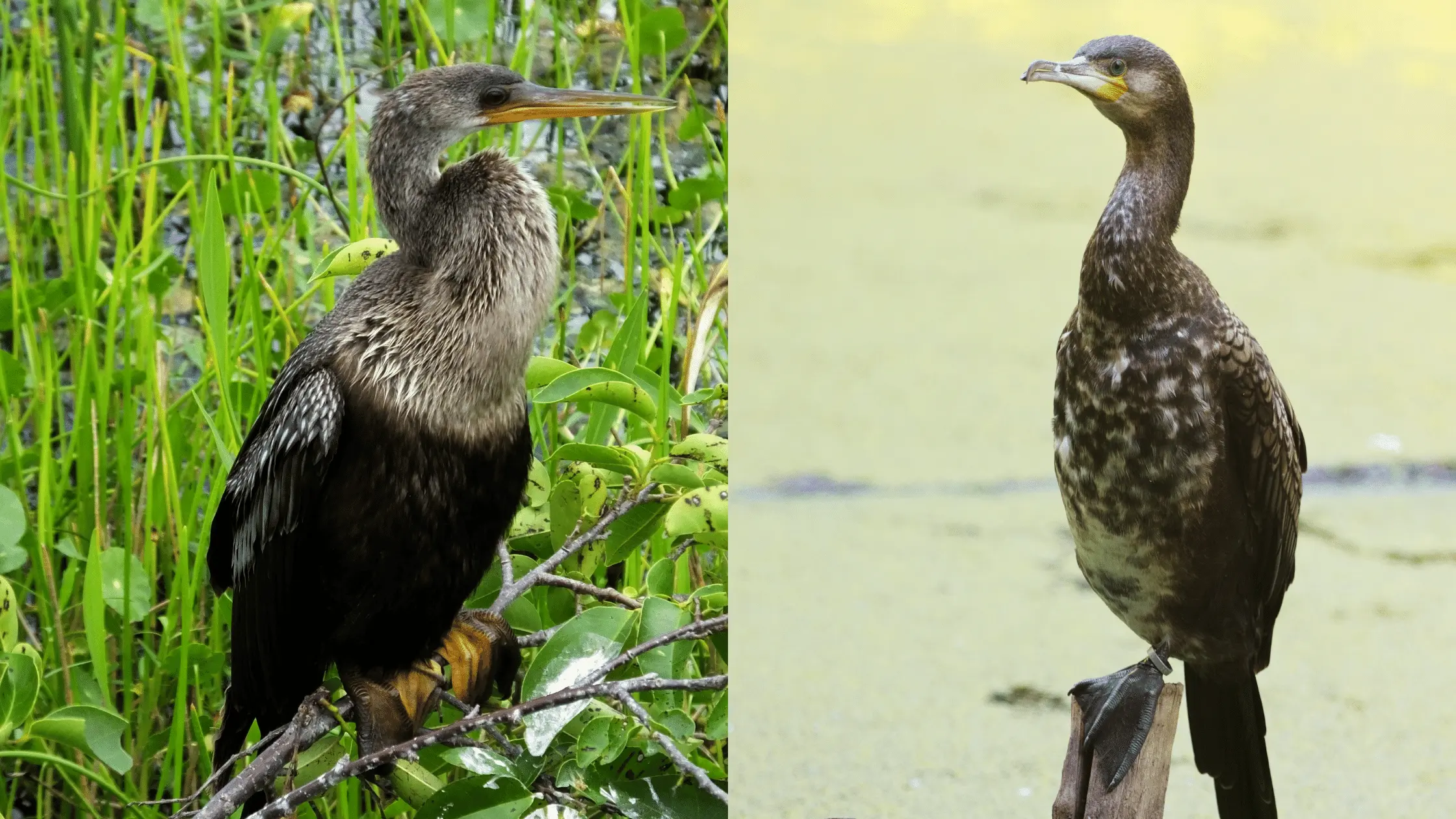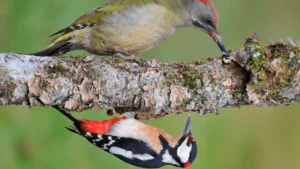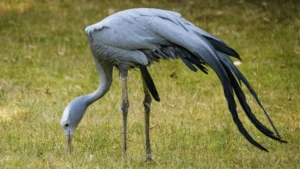When I am on the shoreline, relaxing with my family, I always make it a duty to try to identify the birds that perch on the shore. Two birds that have always posed a challenge for me in telling them apart are the anhinga and cormorant.
The anhinga and cormorant look similar in physical appearance, and they both hunt underwater. So, what are the differences between these two? One significant difference is that an anhinga makes a loud clicking sound while a cormorant makes a deep, guttural sound. I’ve watched these birds long enough and spotted some key differences. Wanna know them? Read on.
What is an Anhinga?
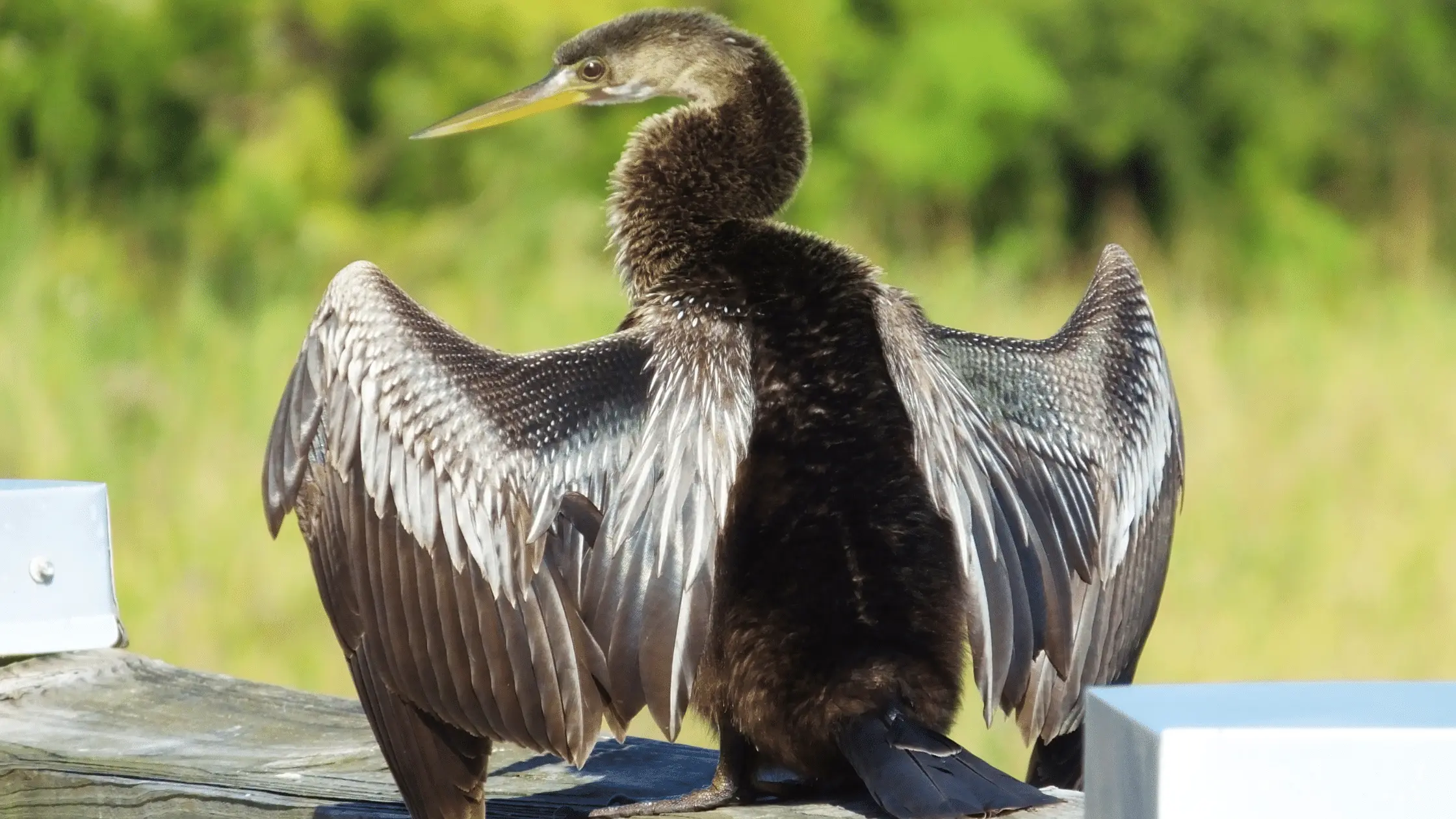
The Anhinga, also called the snake bird(more on this later), weighs about three lbs. The anhinga is about 29.5 to 37 inches long, often found near marshes, sloughs, and lakes. The anhinga prefers freshwater and is found in places that have a warm climate. For example, the anhinga can be located in Argentina and the SouthEastern United States.
The anhinga is noticeable thanks to its long and pointed bill. The bill is shaped like a spear, it serves as an effective fishing spear for catching fish. The male anhinga is dark-colored but spots a few light patches under its wings. The female anhinga is lighter in color when compared to its male counterparts. The chest feathers and neck of the female are exceptionally light-colored.
Don’t be alarmed when you are on a coastline and see an anhinga drying its feathers. The anhinga does not have waterproof feathers like other large waterbirds. The lack of waterproof feathers allows the anhinga to dive into the water quickly, but it must also dry out its feathers periodically.
I remember telling you I would explain why an anhinga is called a snakebird. You see, anhingas are called snake birds because of how they swim. When the bird swims, its thin head and long neck look like a snake.
What is a Cormorant?
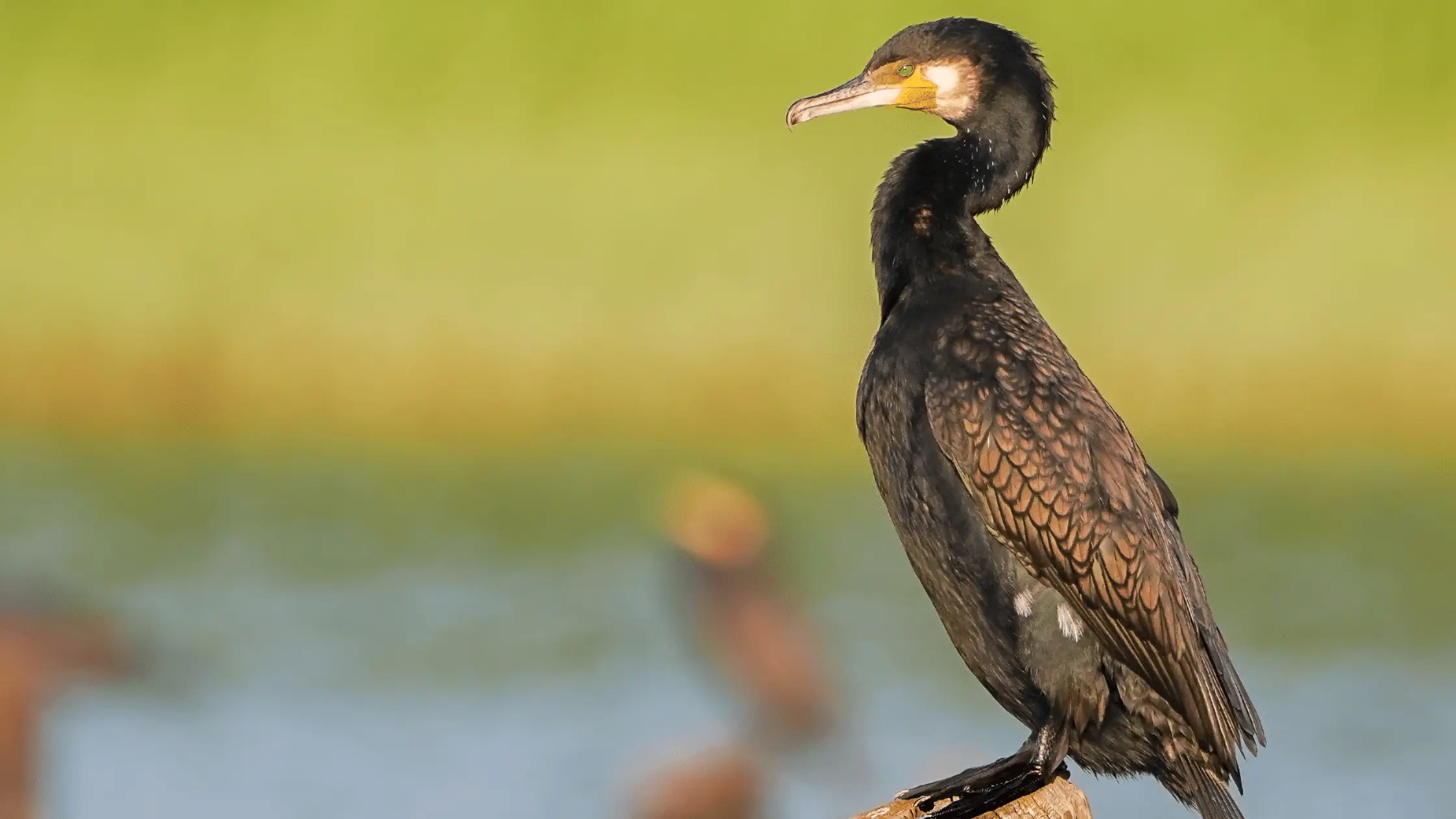
Cormorant is an all-encompassing name for numerous species of Phalacrocorax. The cormorant has a wingspan of 45-100 cm, depending on the species. Also, the cormorant weighs about 350 grams to five kg. Again, the weight depends on what species of cormorant you are measuring.
The cormorant can be found on most coasts except the central Pacific islands. When it comes to diving, the cormorants are Olympic standard divers. Some cormorants dive as deep as 150 feet as they hunt for food. They will speed under the water using their webbed feet. Their wings serve as rudders.
The cormorant likes to nest in colonies. Their colonies can be quite a sight because they can number up to 4000 birds. Some species of cormorants also go on hunting trips together. The beak of the cormorant is slender and hooked. Their beak helps them in eating all kinds of small fish species. One of the ways to identify a cormorant from an anhinga is by looking for the one with a pouch. Cormorants have small pouches, which make them very easy to locate.
The primary plumage of a cormorant is black. However, their plumage can occasionally be marked with yellow, red, or white specks.
Anhinga Vs. Cormorant: Habitat

Even though the anhinga is a distinguished water hunter, the cormorant is still a better hunter. That is why the anhinga prefers to dwell in shallow and protected waters. It also likes to use the rocks around the protected water to dry itself. The anhinga is intentional about staying near freshwater unless there is an extreme drought.
The anhinga will make its nests on the bay’s shores that it can easily access. They also live in colonies. You may spot them living in colonies with other water birds like egrets. Anhinga likes to stay in freshwater but may occasionally reproduce in saltwater colonies.
Cormorants like to live in bays and along coastlines. You can also find them in rivers and ponds. Cormorants are very versatile in hunting so they can be found on almost any body of water. These birds are widespread in the United States and will build their nests near or directly above the water. They may also make their nests in coastal cliffs or on island grounds.
Anhinga Vs. Cormorant: Looks
Anhingas are large and black. They get their name “snakebird” because of their snake-like neck. Their eyes can be red or blue, and they spot an olive-brown beak they employ when catching fish. Their forewings are speckled with silver-gray feathers. Their upper backs are also speckled with the same colors.
Cormorants aren’t as big as their anhinga counterparts. Cormorants are small birds with long tails. The top of their head is black. The cormorant has a shiny blue color. The bill of these birds is yellowish gray, and they have a V-shaped gular pouch with white borders. The pouch of a cormorant is one of its most recognizable features.
Anhinga Vs. Cormorant: Size
On average, an anhinga weighs about 3.2 lbs. They are also about 87 cm in length, and they have a wingspan of 118 cm. The anhinga also has a bill that is about 80-82 millimeters in length. The head of the anhinga is relatively small and only looks like an extension of its snake-like neck.
Cormorants vary in size because of the vastness of their species. For example, the pygmy cormorant is small, measuring a measly 46 cm and weighing about 0.7 lbs. On the other hand, the flightless cormorant is quite large, measuring 110 cm and weighing 11.5 lbs at its biggest size.
Anhinga Vs. Cormorant: Diet
Anhingas love to eat fish. They will also occasionally eat small crabs and other invertebrates. The anhinga hunts by swimming and stalking the fish. They hide behind underwater plants and strike at the fish using their spear-shaped bills.
On the other hand, cormorants are strictly fish eaters. They are just like the egret in their strict fish-based diet. The adult cormorant consumes at least one pound of fish every day. They mainly eat tiny fish, consuming as many as possible. The cormorant will go for the easiest catch. Lazy, aren’t they?
Anhinga Vs. Cormorant: Behavior
Anhingas like to be alone for the most part. They are also nocturnal. However, you may also see an anhinga flock together with other birds, such as herons, egrets, storks, and gulls. For some reason, you won’t find anhingas socializing with other anhingas except when they are in breeding colonies.
Anhingas protect their nests at all costs. They will whip out the big guns– their beak, and ward off intruders who try to come too close to their nest. They will also peck other anhingas on the neck and head because the offending anhinga tried to come uncomfortably close to the nest. They will fish or perch on trees when they are not on the water. When their feathers get waterlogged, they swim out of the water to dry out in the sun.
Cormorants are very social. You will find them in small and large groups when they gather at their nesting sites. They gather at their nesting sites during the winter. They reproduce in colonies and feed in huge flocks numbering up to 4000.
When the sun is up, they will move in packs as they search for fish. When they are done fishing, they will seek high ground and open up their feathers. Are they drying their feathers? I am not sure because cormorants in captivity who don’t dive for food will also spread their feathers after eating.

